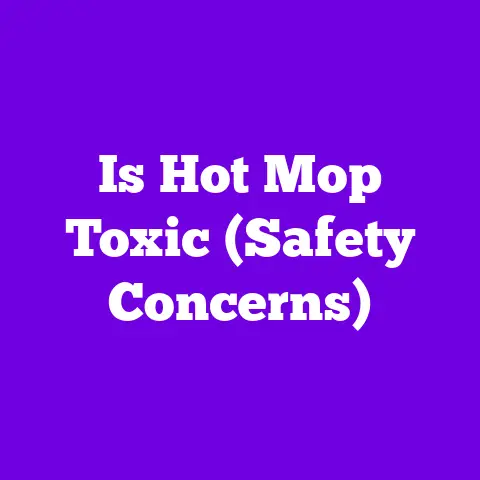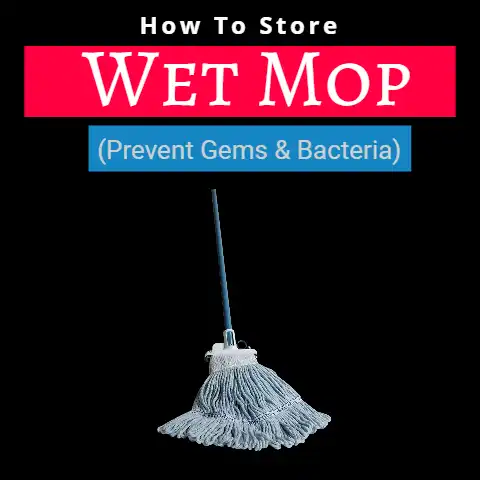How To Wash A String Mop Head (3 Quick Tricks)
Feel the Refreshing Scent of Clean
Ever noticed that unmistakable scent of a freshly cleaned room? It’s like a burst of fresh air that makes everything feel just right. But achieving that feeling isn’t just about mopping the floor. It’s also about keeping your tools clean, especially your string mop head. Let’s dive into how we can make this task quick and efficient.
Trick 1: Soak and Rinse
The first trick I use is a classic soak and rinse method. It’s simple but effective and always brings back memories of cleaning days at my grandmother’s house. She swore by this method, saying, “A clean mop is a happy mop!”
Materials Needed
- Bucket
- Warm water
- Mild detergent or vinegar
- Gloves
Step-by-Step Guide
- Prepare the Solution: Fill a bucket with warm water and add a few drops of mild detergent or half a cup of vinegar. The warm water helps loosen dirt, while vinegar acts as a natural disinfectant. It’s like giving your mop a spa day—relaxing and rejuvenating.
- Submerge the Mop Head: Place the mop head in the bucket, ensuring it’s fully submerged. Let it soak for 15-20 minutes. This gives the solution time to break down any grime that might be clinging on for dear life. I remember watching the clock as a kid, eager to see the transformation.
- Rinse Thoroughly: After soaking, rinse the mop head under running water. Use your hands to gently squeeze out the water and any remaining dirt. Do it until the water runs clear. This part reminds me of wringing out laundry with my mom, making sure every drop was squeezed out.
- Dry Completely: Hang the mop head in a well-ventilated area to dry. Ensure it’s completely dry before storing to prevent mildew. A damp mop head is like an invitation for mold to move in, and nobody wants that!
Tips and Warnings
- Use Gloves: Always wear gloves to protect your hands from detergents. My hands would always feel dry and itchy if I skipped this step.
- Avoid Hot Water: Hot water can damage the fibers of the mop head. I learned this the hard way when I accidentally shrank my favorite mop!
Personalized Insights
The soak and rinse method is my go-to for regular maintenance. It’s quick, effective, and doesn’t require any fancy equipment. Plus, I love the nostalgic feeling it brings back, connecting me to generations of cleaners in my family.
Trick 2: Machine Wash
If you’re anything like me, sometimes you just want to let a machine do the work. Here’s how you can wash your mop head in the washing machine, a method I discovered during a particularly busy week when time was scarce.
Materials Needed
- Washing machine
- Laundry bag
- Mild detergent
Step-by-Step Guide
- Check Compatibility: Not all mop heads are machine washable. Check the label first. I once threw in a non-machine washable mop head, and let’s just say it didn’t end well!
- Use a Laundry Bag: Place the mop head in a laundry bag to prevent tangling. It’s like giving it its own little protective cocoon.
- Select the Right Settings: Use cold water and a gentle cycle with a mild detergent. Avoid using bleach as it can degrade fibers. I still remember my surprise when my mop came out looking brand new.
- Dry Properly: After washing, hang the mop head to dry completely before storing. The smell of freshly laundered cleaning tools is oddly satisfying!
Tips and Warnings
- Avoid Fabric Softener: It can coat fibers, reducing absorbency. I learned this tip from a seasoned janitor who knew all the tricks of the trade.
- Watch for Fraying: Machine washing can sometimes cause fraying, so inspect your mop head after washing.
Personalized Insights
Machine washing is perfect for those times when I’m juggling multiple tasks at once. It’s efficient and allows me to focus on other cleaning duties while the machine does its magic.
Trick 3: Hand Wash with Baking Soda
Sometimes, a little extra scrubbing is needed, and baking soda is my secret weapon—a tip passed down from my aunt who was known for her spotless floors.
Materials Needed
- Bucket
- Warm water
- Baking soda
- Brush
Step-by-Step Guide
- Make a Paste: Mix baking soda with a small amount of water to form a paste. It’s like creating your own custom cleaning solution!
- Apply to Mop Head: Spread the paste over the mop head, focusing on stained or dirty areas. I always feel like an artist applying paint to canvas during this step.
- Scrub Gently: Use a brush to scrub the mop head gently. Baking soda helps lift stains without damaging the material. It’s incredibly satisfying to see those stubborn stains disappear.
- Rinse Well: Rinse thoroughly with warm water to remove all traces of baking soda.
- Air Dry: Allow the mop head to dry completely before putting it back in use.
Tips and Warnings
- Spot Test First: Baking soda is generally safe but do a spot test if you’re unsure.
- Don’t Over Scrub: Be gentle to avoid damaging the fibers.
Personalized Insights
Hand washing with baking soda is my method of choice for tackling tough stains or when I want to give my mop head some extra attention. It’s like a deep clean that leaves everything feeling fresh and new.
Common Mistakes to Avoid
- Skipping Drying: Never store your mop head wet; it encourages mold growth.
- Using Harsh Chemicals: They can damage both the mop head and your floors.
- Neglecting Regular Cleaning: A dirty mop spreads dirt rather than cleaning it.
Personalized Stories
I remember skipping drying once because I was in a rush, only to find my mop smelling musty the next time I needed it. Lesson learned!
Proper Cleanup and Finishing Procedures
After washing your mop, clean up any spills around your washing area and wash your hands thoroughly. Store your cleaning materials in a designated area for easy access next time.
Personalized Insights
Keeping my cleaning area organized has been a game-changer for me. It saves time and makes the whole process much more enjoyable.
Safety Considerations
- Always read labels on cleaning products for safety instructions.
- Avoid mixing cleaning agents like bleach and vinegar; it can produce harmful fumes.
Personalized Stories
My first experience with mixing cleaning agents was a bit of a scare—now I’m extra cautious about what I combine!
FAQs
Q: How often should I wash my mop head?
A: Ideally, after every use or at least weekly if used frequently.
Q: Can I use bleach to clean my mop head?
A: It’s best to avoid bleach as it can break down the fibers over time.
Q: What if my mop head has an odor?
A: Soaking in vinegar or baking soda solution can help neutralize odors.
Washing a string mop head might seem like a chore, but with these tricks, it’s quick and easy. Keeping your tools clean ensures your floors stay spotless, leaving behind that fresh, clean scent we all love!






